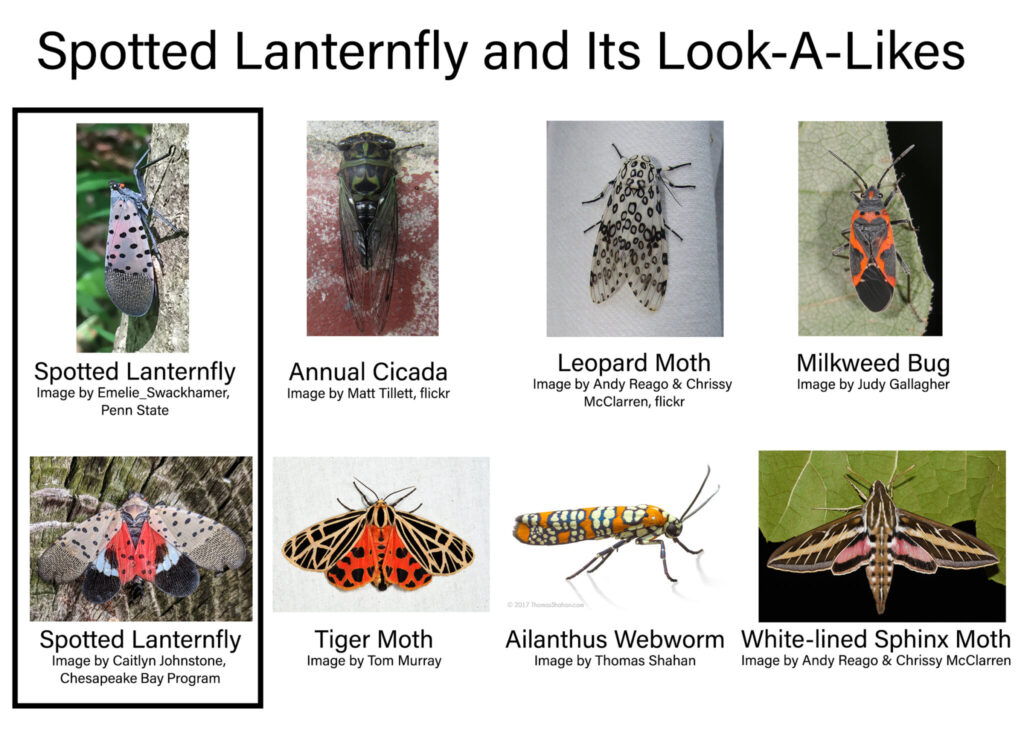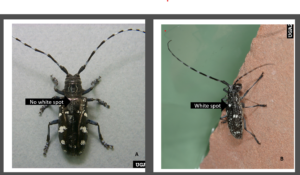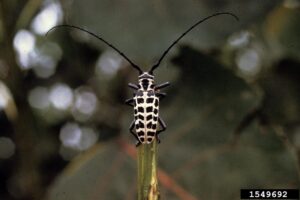August is a great month to search for invasive species because adult pests are flying and trees can show symptoms of infestation. The adult stages of many insects including Asian longhorned beetle and the spotted lanternfly can easily fall into swimming pools where they become trapped and collected in pool filters. A quick five-minute check of pool filters and trees can help you stop a problem before it kills your trees or your local forest! Take a photo of anything suspicious and contact the Indiana Division of Entomology and Plant Pathology (DEPP) by calling 866-NO EXOTIC (866-663-9684) or send an email (with a photo of the insect if possible) to DEPP@dnr.IN.gov.
How to Check Your Pool Filter
Take a close look at the filter used to skim insects and leaves of the top surface of pools. Focus your efforts on long black beetles, or any insect with a hint of bright red or yellow colorations.
Find a long black beetle?
It could be an Asian longhorned beetle (ALB) if its antennae are longer than its body. These antennae also have white bands. Its body is shiny and has whit spots. If the antennae are shorter that the body, it is NOT Asian longhorned beetle. Common lookalikes that you can find include pine sawyer beetles, and poplar beetles.
- Figure 1. Two spotted black beetles with striped antennae. The Asian longhorned beetle (ALB) on left has more prominent stripes and spots on forewings are located near the edge. Spotted spined sawyer (SSS) beetle has less prominent stripes, and a very distinct white spot where the forewings join. (ALB photo by D. Duerr USDA Forest Service, Bugwood.org; SSS photo by J. Berger Bugwood.org)
- Figure 2. Cottonwood longhorned beetles do not have white stripes. These beetles are white, with black markings. Photo by J. Baker, North Carolina State University Bugwood.org
Find a black and orange or black and red insect?
Although spotted lanternfly are distinct in shape and color there are many insects that people can mistake for spotted lanternfly.

Figure 3. Common spotted lanternfly lookalikes. Courtesy of the Spotted Lanternfly Project.How to Check Your Trees
Is your tree healthy and normal?
Start by making sure you know type of tree you have. Is it a deciduous tree like an oak or maple? Or is it an evergreen that like a spruce or a pine? Don’t worry about exactly what species it is. It’s enough to have a general sense of what your tree should look like when it’s healthy.
Check the leaves
- Are the leaves the correct color or are they yellow, red or brown?
- Are there spots on the leaves that should not be there?
- Are the leaves covered with a sticky liquid?
- Are leaves distorted or disfigured?
- Are leaves missing?
- Are parts of leaves chewed?
Check the trunk and branches
- Are there holes or splits in the trunk or branches?
- Is there sap dripping down the tree?
- Is there sawdust on or under your tree?
- Does something sticky drop down onto you when you stand under the tree? You might have spotted lanternfly. Please report it right away!
Now what?
If you answered YES to any of the questions above, there’s a good chance something is wrong. To decide if and how you should treat or report the problem, you’ll need to have a tentative diagnosis. Luckily, there are ways to get one!
Know the plant species? Use the Purdue Tree Doctor to get a diagnosis and a recommendation on whether treating or reporting is needed. This resource allows you to flip through photos of problem plagued leaves, branches and trunks to help you rapidly identify the problem. If you have an invasive pest, it will guide you how to report it.
Don’t know the tree species and still need help? Reach out to local experts.
- Purdue Cooperative Extension Service (https://extension.purdue.edu/) can answer your questions or direct you to a local tree care professional with the right expertise.
- Contact an arborist who can give you an assessment of your tree and specific treatment recommendations (https://www.treesaregood.org/findanarborist).

